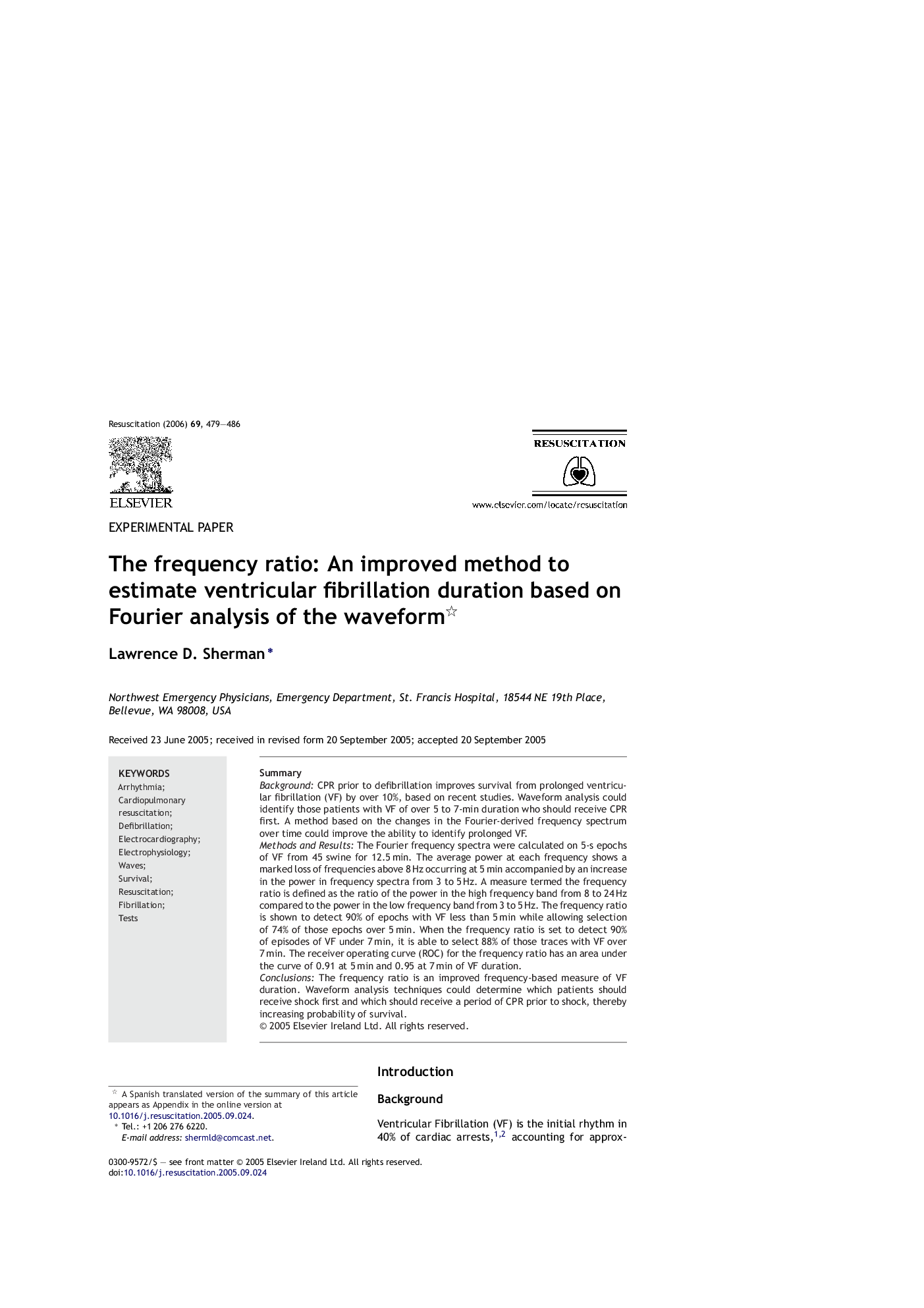| Article ID | Journal | Published Year | Pages | File Type |
|---|---|---|---|---|
| 3011058 | Resuscitation | 2006 | 8 Pages |
SummaryBackgroundCPR prior to defibrillation improves survival from prolonged ventricular fibrillation (VF) by over 10%, based on recent studies. Waveform analysis could identify those patients with VF of over 5 to 7-min duration who should receive CPR first. A method based on the changes in the Fourier-derived frequency spectrum over time could improve the ability to identify prolonged VF.Methods and ResultsThe Fourier frequency spectra were calculated on 5-s epochs of VF from 45 swine for 12.5 min. The average power at each frequency shows a marked loss of frequencies above 8 Hz occurring at 5 min accompanied by an increase in the power in frequency spectra from 3 to 5 Hz. A measure termed the frequency ratio is defined as the ratio of the power in the high frequency band from 8 to 24 Hz compared to the power in the low frequency band from 3 to 5 Hz. The frequency ratio is shown to detect 90% of epochs with VF less than 5 min while allowing selection of 74% of those epochs over 5 min. When the frequency ratio is set to detect 90% of episodes of VF under 7 min, it is able to select 88% of those traces with VF over 7 min. The receiver operating curve (ROC) for the frequency ratio has an area under the curve of 0.91 at 5 min and 0.95 at 7 min of VF duration.ConclusionsThe frequency ratio is an improved frequency-based measure of VF duration. Waveform analysis techniques could determine which patients should receive shock first and which should receive a period of CPR prior to shock, thereby increasing probability of survival.
